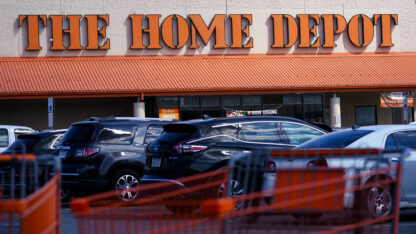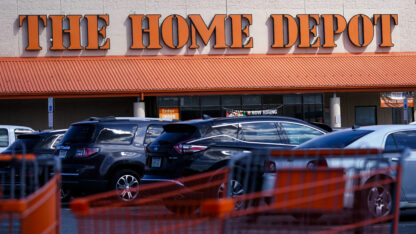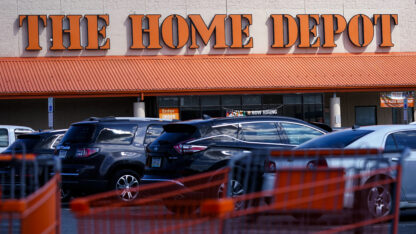Atlanta-based Home Depot's sales continue to soften in 2024

Home Depot’s sales continued to soften in the first quarter as the nation’s largest home improvement retailer was not only constrained by high mortgage rates and higher inflation for its customers, but it also had to deal with a delayed start to spring.
Sales slipped 2.3% to $36.42 billion for the period ended April 28, just shy of the $36.65 billion that analysts polled by Zacks Investment Research expected. It was the third consecutive quarter of declining sales for the retailer, which saw sales skyrocket during the pandemic.
Customer transactions dipped 1% in the quarter, with shoppers also spending a bit less, averaging $90.68 per receipt compared with $91.92 a year earlier.
Sales at stores open at least a year, a key gauge of a retailer’s health, declined 2.8% globally, and 3.2% in the U.S.
Last week the average rate on a 30-year mortgage fell for the first time in a month, a slight relief for home shoppers already facing the challenges of rising housing prices and a shortage of homes for sale.
The modest pullback followed a five-week string of increases that pushed the average rate to its highest level since Nov. 30. When mortgage rates rise, they can add hundreds of dollars a month in costs for borrowers, limiting how much homebuyers can afford.
Americans are pulling back on large home remodeling projects, like bathrooms and kitchens, and that is hitting Home Depot, said Neil Saunders, managing director of GlobalData.
“Many more households are reluctant to undertake activity due to financial constraints or the higher cost of using credit to pay for work,” Saunders said in an email. “We are also detecting some hesitation among consumers who hope to move in the future so do not want to undertake big improvement projects in the homes they currently live in.”
While people are still spending money on less expensive home decor projects, Saunders says Home Depot faces more competition in that area from garden centers, paint specialists and others and consumers are shopping around for the best bargains and deals.
The professional side of Home Depot’s business is stronger, but Saunders says there are still some pockets of softness.
“Overall, Home Depot remains a formidable business. The current challenges are all caused by a period of churn in the consumer economy rather than by any missteps the company has made. Even so, we think the year ahead will be one of continued reset,” he said.
For the first quarter, Home Depot Inc. earned $3.6 billion, or $3.63 per share, down from the $3.87 billion, or $3.82 per share, it earned in the same period last year.
But that was better than the $3.61 per share that Wall Street expected.
The Atlanta company maintained its fiscal full-year forecast for total sales growth of about 1%, which includes a 53rd week. It still anticipates same-store sales falling approximately 1% for the 52-week period.
Shares rose nearly 2% before the market open on Tuesday.








